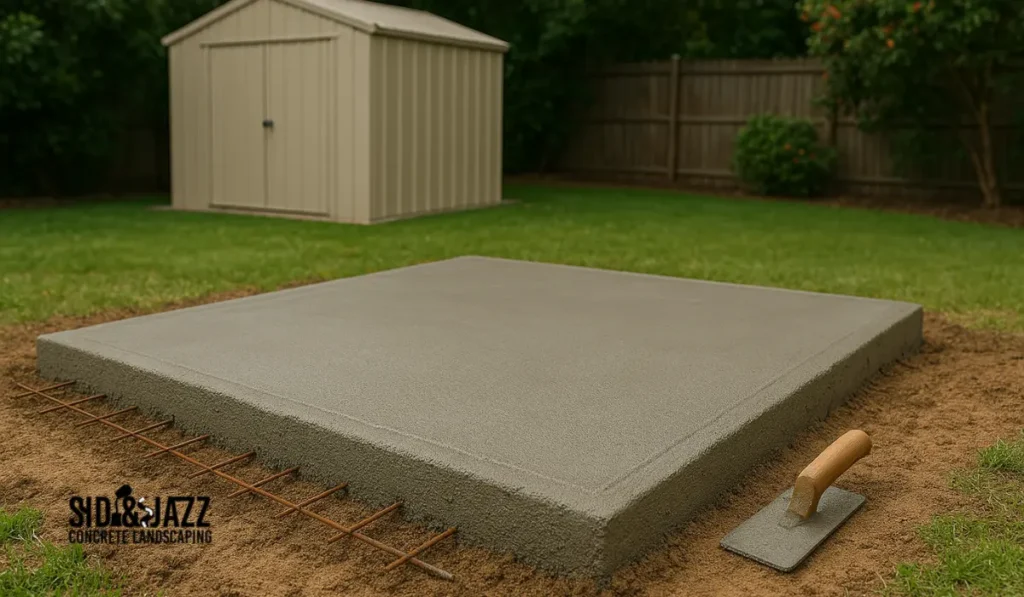Shed Slabs: The Foundation of a Strong & Durable Shed

A solid and stable foundation is crucial for any shed, and shed slabs are the best solution for ensuring durability and longevity. Whether you’re building a small garden shed or a large storage unit, a well-constructed concrete slab provides strength, stability, and protection against environmental factors. In this blog, we will explore the benefits, construction process, and essential factors to consider when installing shed slabs.
Why Choose Concrete Shed Slabs?
Exceptional Strength
Concrete shed slabs offer a strong and stable foundation that can support heavy loads without cracking or shifting over time. This ensures the longevity of your shed and prevents structural damage.
Durability & Weather Resistance
Concrete is highly resistant to weather conditions, including rain, heat, and frost. Unlike wooden or gravel bases, concrete slabs do not rot, shift, or deteriorate over time.
Pest and Moisture Protection
A concrete slab prevents moisture from seeping into the shed, reducing the risk of mold, mildew, and wood rot. It also acts as a barrier against pests like termites and rodents.
Low Maintenance
Once installed, a concrete shed slab requires minimal upkeep. Regular cleaning and occasional sealing help maintain its strength and appearance for years to come.
How to Construct a Shed Slab: Step-by-Step Guide
Planning and Preparation
- Choose a suitable location with proper drainage.
- Measure the dimensions of your shed to determine the slab size.
- Mark the area and clear any debris or vegetation.
Excavation and Base Preparation
- Dig the ground to a depth of approximately 100mm–150mm.
- Level the surface and compact the soil for a firm base.
- Lay a layer of crushed gravel or road base for added stability.
Formwork Installation
- Construct a timber or steel formwork around the perimeter of the slab.
- Ensure it is level and secured properly to prevent movement.
Reinforcement Placement
- Install a steel mesh or reinforcement bars (rebar) to increase strength.
- Elevate the mesh slightly using plastic or concrete spacers.
Pouring the Concrete
- Mix and pour the concrete evenly within the formwork.
- Use a screed board to level the surface and remove excess concrete.
Finishing and Curing
- Smooth the surface with a trowel or float for a clean finish.
- Allow the slab to cure for at least 7 days before placing the shed.
- Keep the slab moist during curing to prevent cracks.
Key Considerations for a Strong Shed Slab
- Thickness: A standard shed slab is typically 100mm thick, but for heavy-duty sheds, a 150mm slab with reinforcement is recommended.
- Reinforcement: Steel mesh or rebar enhances the load-bearing capacity and prevents cracking.
- Drainage: Proper slope and drainage prevent water buildup around the shed.
- Sealing: Applying a concrete sealer protects against moisture and stains.
Conclusion
A properly constructed shed slab ensures a strong, durable, and long-lasting foundation for your shed. Investing in a high-quality concrete slab minimizes future repairs, enhances structural stability, and provides excellent resistance to environmental elements.
For expert shed slab installation, contact Sid and Jazz Concrete Landscaping today and get a sturdy foundation for your shed!
FAQs
How thick should a shed slab be?
A standard shed slab should be at least 100mm thick, but for heavy-duty applications, a 150mm slab with reinforcement is recommended.
Do I need reinforcement for a shed slab?
Reinforcement, such as steel mesh or rebar, is recommended for added strength and to prevent cracking, especially for larger sheds or heavy loads.
How long does a shed slab take to cure?
Concrete slabs typically take about 7 days to cure before they can support a shed. However, full strength is achieved after 28 days.
Can I build a shed directly on the ground instead of a slab?
While some sheds can be placed on gravel or treated wood foundations, a concrete slab provides the best stability, durability, and protection against moisture and pests.
How do I maintain a shed slab?
Regular cleaning, sealing, and ensuring proper drainage around the slab will help maintain its longevity and appearance over time.
